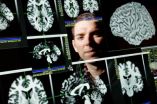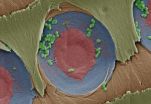(Press-News.org) Passive smoking is linked to a significantly increased risk of miscarriage, stillbirth and ectopic pregnancy, finds a large observational study, published online in Tobacco Control.
The risk appears to be cumulative, with risk heightened in parallel with the length of time exposed to second hand smoke, the findings indicate.
It is well known that smoking during pregnancy significantly increases the risks of miscarriage and birth complications. What is less clear is whether passive smoking exerts similar effects, and if there are particularly critical periods of exposure to second hand smoke.
The researchers drew on historical data from a large sample of more than 80,000 women who had gone through the menopause, and been part of the Women's Health Initiative (WHI) study.
Just over 5000 of the women (6.3%) were current smokers; just under 35,000 (43%) were ex-smokers, who had smoked at least 100 cigarettes; and just under 41,000 (50.6%) were non-smokers. All had been pregnant at least once.
The group of non-smokers was then categorised according to the level of second-hand smoke they had been exposed to during childhood, as an adult at home, and as an adult at work.
The pregnancy outcomes showed that almost one in three of the entire sample (32.6%, 26,307) said they had miscarried at least once. Some 3552 (4.4%) had experienced a stillbirth, while 2033 (2.5%) had had a tubal ectopic pregnancy.
Not unexpectedly, younger and/or better educated women were less likely to miscarry or have birth complications; women of black and minority ethnic backgrounds and those who were overweight were more likely to do so.
Women who had never smoked were less likely to miscarry, have a stillborn child or an ectopic pregnancy than either current or former smokers, the data showed.
Compared with non-smokers, women who had ever smoked during their reproductive years were 16% more likely to miscarry, 44% more likely to have a stillborn child, and 43% more likely to have an ectopic pregnancy.
And these associations were also evident for non-smokers who had breathed in other people's cigarette smoke compared with non-smokers who had not been similarly exposed. The longer the period of exposure, the greater was the risk for non-smokers.
Those who had experienced the highest levels of lifetime exposure, including more than 10 years as a child, or more than 20 years as an adult at home, or more than 10 years in the workplace were 17% more likely to miscarry, 55% more likely to give birth to a stillborn child, and 61% more likely to have an ectopic pregnancy.
INFORMATION:
Associations of lifetime active and passive smoking with spontaneous abortion, stillbirth and tubal ectopic pregnancy: a cross sectional analysis of historical data from the Women's Health Initiative Online First doi 10.1136/tobaccocontrol-2013-051458
Passive smoking linked to increased miscarriage, stillbirth, and ectopic pregnancy risk
Risk is cumulative and heightened in parallel with length of exposure
2014-02-27
ELSE PRESS RELEASES FROM THIS DATE:
Spotted seal study reveals sensitive hearing in air and water
2014-02-27
Two spotted seals orphaned as pups in the Arctic are now thriving at UC Santa Cruz's Long Marine Laboratory, giving scientists a rare opportunity to learn about how these seals perceive their environment. In a comprehensive study of the hearing abilities of spotted seals, UCSC researchers found that the seals have remarkably sensitive hearing in both air and water.
The findings, published February 26 in the Journal of Experimental Biology, are important for understanding how spotted seals might be affected by noise from human activities in the rapidly changing Arctic ...
Secondhand smoke exposure linked to adverse pregnancy outcomes
2014-02-27
BUFFALO, N.Y. — Secondhand smoking is linked with pregnancy loss, including miscarriage, stillbirth and tubal ectopic pregnancy, according to new research from scientists at Roswell Park Cancer Institute (RPCI) and the University at Buffalo (UB). The study findings, published online by the journal Tobacco Control, mark a significant step toward clarifying the risks of secondhand smoke exposure.
"This study demonstrated that pregnancy outcomes can be correlated with secondhand smoking. Significantly, women who have never smoked but were exposed to secondhand smoke were ...
Febrile illnesses in children most often due to viral infections
2014-02-27
This news release is available in German. Most children ill with fever in Tanzania suffer from a viral infection, a new study published in the New England Journal of Medicine shows. A research team led by Dr. Valérie D'Acremont from the Swiss Tropical and Public Health Institute in Basel and the Policlinique Médicale Universitaire in Lausanne systematically assessed the causes of febrile illnesses in Tanzanian children. According to the results, in most cases a treatment with antimalarials or antibiotics is not required. The finding has the potential to improve the ...
Breast cancer cells less likely to spread when one gene is turned off
2014-02-27
COLUMBUS, Ohio – New research suggests that a protein only recently linked to cancer has a significant effect on the risk that breast cancer will spread, and that lowering the protein's level in cell cultures and mice reduces chances for the disease to extend beyond the initial tumor.
The team of medical and engineering researchers at The Ohio State University previously determined that modifying a single gene to reduce this protein's level in breast cancer cells lowered the cells' ability to migrate away from the tumor site.
In a new study published in the journal ...
One gene influences recovery from traumatic brain injury
2014-02-27
CHAMPAIGN, Ill. — Researchers report that one change in the sequence of the BDNF gene causes some people to be more impaired by traumatic brain injury (TBI) than others with comparable wounds.
The study, described in the journal PLOS ONE, measured general intelligence in a group of 156 Vietnam War veterans who suffered penetrating head wounds during the war. All of the study subjects had damage to the prefrontal cortex, a brain region behind the forehead that is important to cognitive tasks such as planning, problem-solving, self-restraint and complex thought.
The ...
Caesarean babies are more likely to become overweight as adults
2014-02-27
Babies born by caesarean section are more likely to be overweight or obese as adults, according to a new analysis.
The odds of being overweight or obese are 26 per cent higher for adults born by caesarean section than those born by vaginal delivery, the study found (see footnote).
The finding, reported in the journal PLOS ONE, is based on combined data from 15 studies with over 38,000 participants.
The researchers, from Imperial College London, say there are good reasons why many women should have a C-section, but mothers choosing a caesarean should be aware that ...
Cows are smarter when raised in pairs
2014-02-27
Cows learn better when housed together, which may help them adjust faster to complex new feeding and milking technologies on the modern farm, a new University of British Columbia study finds.
The research, published today in PLOS ONE, shows dairy calves become better at learning when a "buddy system" is in place. The study also provides the first evidence that the standard practice of individually housing calves is associated with certain learning difficulties.
"Pairing calves seems to change the way these animals are able to process information," said Dan Weary, corresponding ...
Impact on mummy skull suggests murder
2014-02-27
Blunt force trauma to the skull of a mummy with signs of Chagas disease may support homicide as cause of death, which is similar to previously described South American mummies, according to a study published February 26, 2014 in PLOS ONE by Stephanie Panzer from Trauma Center Murau, Germany, and colleagues, a study that has been directed by the paleopathologist Andreas Nerlich from Munich University.
For over a hundred years, the unidentified mummy has been housed in the Bavarian State Archeological Collection in Germany. To better understand its origin and life history, ...
Tree branch filters water
2014-02-27
A small piece of freshly cut sapwood can filter out more than 99 percent of the bacteria E. coli from water, according to a paper published in PLOS ONE on February 26, 2014 by Michael Boutilier and Jongho Lee and colleagues from MIT.
Researchers were interested in studying low-cost and easy-to-make options for filtering dirty water, a major cause of human mortality in the developing world. The sapwood of pine trees contains xylem, a porous tissue that moves sap from a tree's roots to its top through a system of vessels and pores. To investigate sapwood's water-filtering ...
Waterbirds' hunt aided by specialized tail
2014-02-27
The convergent evolution of tail shapes in diving birds may be driven by foraging style, according to a paper published in PLOS ONE on February 26, 2014 by Ryan Felice and Patrick O'Connor from Ohio University.
Birds use their wings and specialized tail to maneuver through the air while flying. It turns out that the purpose of a bird's tail may have also aided in their diversification by allowing them to use a greater variety of foraging strategies. To better understand the relationship between bird tail shape and foraging strategy, researchers examined the tail skeletal ...
LAST 30 PRESS RELEASES:
Making lighter work of calculating fluid and heat flow
Normalizing blood sugar can halve heart attack risk
Lowering blood sugar cuts heart attack risk in people with prediabetes
Study links genetic variants to risk of blinding eye disease in premature infants
Non-opioid ‘pain sponge’ therapy halts cartilage degeneration and relieves chronic pain
AI can pick up cultural values by mimicking how kids learn
China’s ecological redlines offer fast track to 30 x 30 global conservation goal
Invisible indoor threats: emerging household contaminants and their growing risks to human health
Adding antibody treatment to chemo boosts outcomes for children with rare cancer
Germline pathogenic variants among women without a history of breast cancer
Tanning beds triple melanoma risk, potentially causing broad DNA damage
Unique bond identified as key to viral infection speed
Indoor tanning makes youthful skin much older on a genetic level
Mouse model sheds new light on the causes and potential solutions to human GI problems linked to muscular dystrophy
The Journal of Nuclear Medicine ahead-of-print tip sheet: December 12, 2025
Smarter tools for peering into the microscopic world
Applications open for funding to conduct research in the Kinsey Institute archives
Global measure underestimates the severity of food insecurity
Child survivors of critical illness are missing out on timely follow up care
Risk-based vs annual breast cancer screening / the WISDOM randomized clinical trial
University of Toronto launches Electric Vehicle Innovation Ontario to accelerate advanced EV technologies and build Canada’s innovation advantage
Early relapse predicts poor outcomes in aggressive blood cancer
American College of Lifestyle Medicine applauds two CMS models aligned with lifestyle medicine practice and reimbursement
Clinical trial finds cannabis use not a barrier to quitting nicotine vaping
Supplemental nutrition assistance program policies and food insecurity
Switching immune cells to “night mode” could limit damage after a heart attack, study suggests
URI-based Global RIghts Project report spotlights continued troubling trends in worldwide inhumane treatment
Neutrophils are less aggressive at night, explaining why nighttime heart attacks cause less damage than daytime events
Menopausal hormone therapy may not pose breast cancer risk for women with BRCA mutations
Mobile health tool may improve quality of life for adolescent and young adult breast cancer survivors
[Press-News.org] Passive smoking linked to increased miscarriage, stillbirth, and ectopic pregnancy riskRisk is cumulative and heightened in parallel with length of exposure





